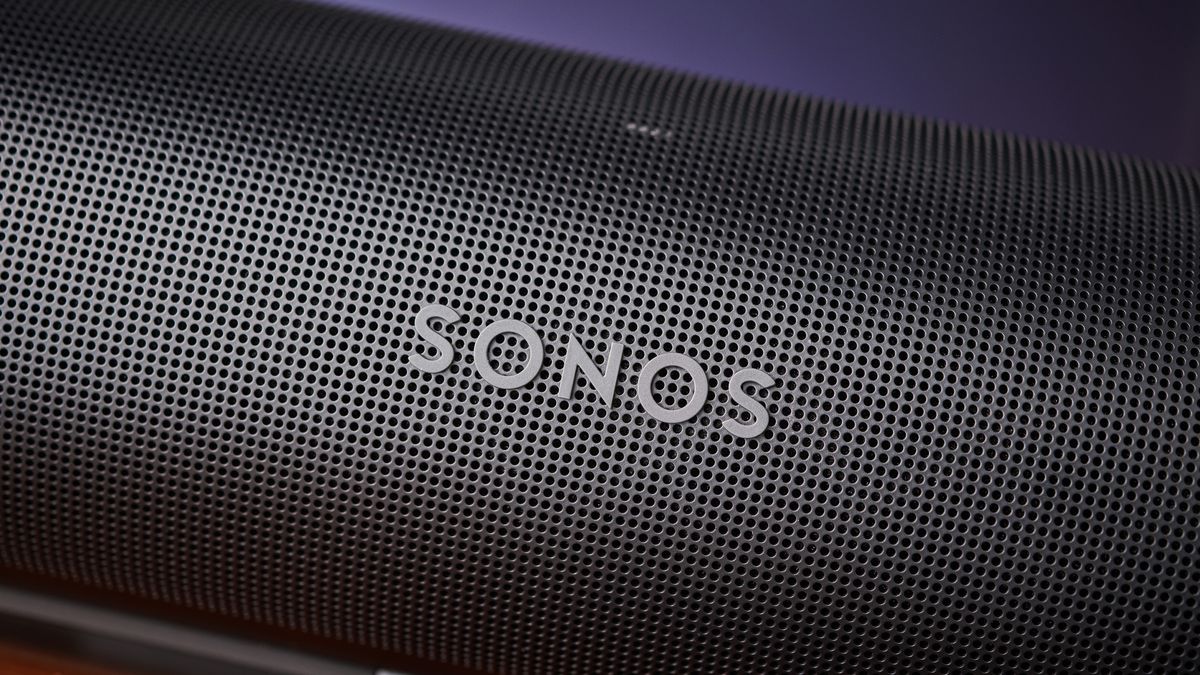- Sonos has reportedly selected an advertisement-centric software system for its upcoming streaming device, stirring discussions among tech enthusiasts.
- The anticipated price tag for this innovative streaming solution is suggested to fall within the range of $150 to $200, in line with other competitive devices.
- I can’t shake off a sense of apprehension about this development, as the brand has encountered significant struggles lately.
Sometimes it’s hard not to respond to news stories with an exasperated sigh of “oh for goodness sake, what NOW?” And it’s been particularly challenging for Sonos this year after a series of troubling app issues that not only tarnished its reputation but also negatively impacted the launch of their much-anticipated Sonos Ace headphones. And now it seems that there could potentially be more troubling news on the way, further complicating the company’s recovery efforts.
According to The Verge, Sonos has reportedly made a decision regarding the operating system for its upcoming video streaming device—a product aimed at competing with popular offerings like the Apple TV 4K, Roku Ultra, and Fire TV Stick 4K, all known for delivering a rich streaming experience. This new OS is set to be developed by an advertising-centered company, raising eyebrows among consumers and industry experts alike.
Given Sonos’s positioning as a premium brand in the audio market, this development elicits concern, suggesting a potentially unappealing combination: the high pricing associated with high-end devices such as the Apple TV 4K, coupled with the invasive advertising and audience tracking seen in devices like the Fire TV. Some consumers may find it difficult to reconcile the brand’s premium image with this ad-driven software approach.
What’s the deal with Sonos’s streaming OS?
Given that all of Sonos’s 2024 woes have come from its software, this seems like a strange decision. The choice to utilize external technology over developing robust software in-house may provide some strategic advantages, especially considering the backlash generated by this year’s controversial Sonos app update. Nevertheless, relying on an untested operating system from an ad company poses significant risks—can consumers really trust Sonos to implement a reliable new software platform after their distasteful experience with the previous one?
With a more optimistic outlook, this partnership could introduce exciting new functionalities to your Sonos system, allowing seamless wireless streaming from your television to speakers like the Sonos Arc Ultra and a range of premium Sonos products. Additionally, users might enjoy the capability to stream TV audio directly to their Sonos Ace headphones in immersive Dolby Atmos sound without the need for a soundbar. Sonos has reportedly filed patents that suggest these features, including smooth control of the TV OS via a mobile phone or television screen, content recommendations based on social connections, and collaborative viewing experiences reminiscent of Apple’s SharePlay.
Let’s remain hopeful that such advancements materialize, but we must also brace ourselves for the possibility that the outcome may include persistent advertisements and privacy concerns, all while consumers are still bearing the steep costs associated with Sonos products. As per The Verge’s findings, The Trade Desk’s pitch for its TV OS, Ventura, seems heavily tilted toward advertising features, lacking clarity on the tangible benefits it offers to end-users. You can explore The Trade Desk’s sales presentation in the embedded video above.
You might also like
What are the potential market risks for Sonos by opting for an advertisement-driven model for their new streaming device?
**Interview with Tech Analyst Lisa Tran on Sonos’s New Streaming Device**
**Interviewer:** Thank you for joining us, Lisa. Let’s dive right into it. Sonos has reportedly chosen an advertisement-centric software for its upcoming streaming device. What are the implications of this decision for the company?
**Lisa Tran:** Thank you for having me! This move raises quite a few eyebrows. On one hand, utilizing an ad-driven platform can help Sonos monetize their device in a competitive market. However, it could alienate their core audience. Sonos has carved out a premium brand identity based on high-quality audio experiences, so associating themselves with intrusive advertising might tarnish that image.
**Interviewer:** That’s an interesting point. The projected pricing for this device is between $150 and $200. How does that compare with the competition like Apple TV 4K or Roku Ultra?
**Lisa Tran:** Yes, this pricing strategy positions Sonos in a competitive range with established brands. However, consumers expect a seamless, premium experience at this price point. The concern arises when you pair a high price with ads. This could lead to dissatisfaction among customers who might feel they are being priced out of a premium service, only to receive a lower-quality experience laden with ads.
**Interviewer:** Given Sonos’s recent struggles, particularly with their app issues and the launch of the Sonos Ace headphones, is this a risky move?
**Lisa Tran:** Absolutely. There is a significant apprehension surrounding this decision. Sonos has already faced backlash due to software glitches that affected user experience. Introducing a new streaming device with an ad-supported platform could compound their problems if not managed well. They need to ensure that this new OS doesn’t lead to further frustrations for users already grappling with the brand’s software troubles.
**Interviewer:** In light of these developments, what do you think the future holds for Sonos?
**Lisa Tran:** The road ahead is challenging but not insurmountable. If Sonos can leverage this new streaming device to create a robust and user-friendly interface that aligns with their premium branding, they might just recover and appeal to a broader audience. However, they have to be cautious not to repeat past mistakes that have tainted their reputation.
**Interviewer:** Thanks, Lisa, for your insights into Sonos’s current situation and strategies. It will be interesting to watch how this unfolds!
**Lisa Tran:** My pleasure! It’s certainly a crucial time for Sonos, and I look forward to seeing how they respond to these challenges.


